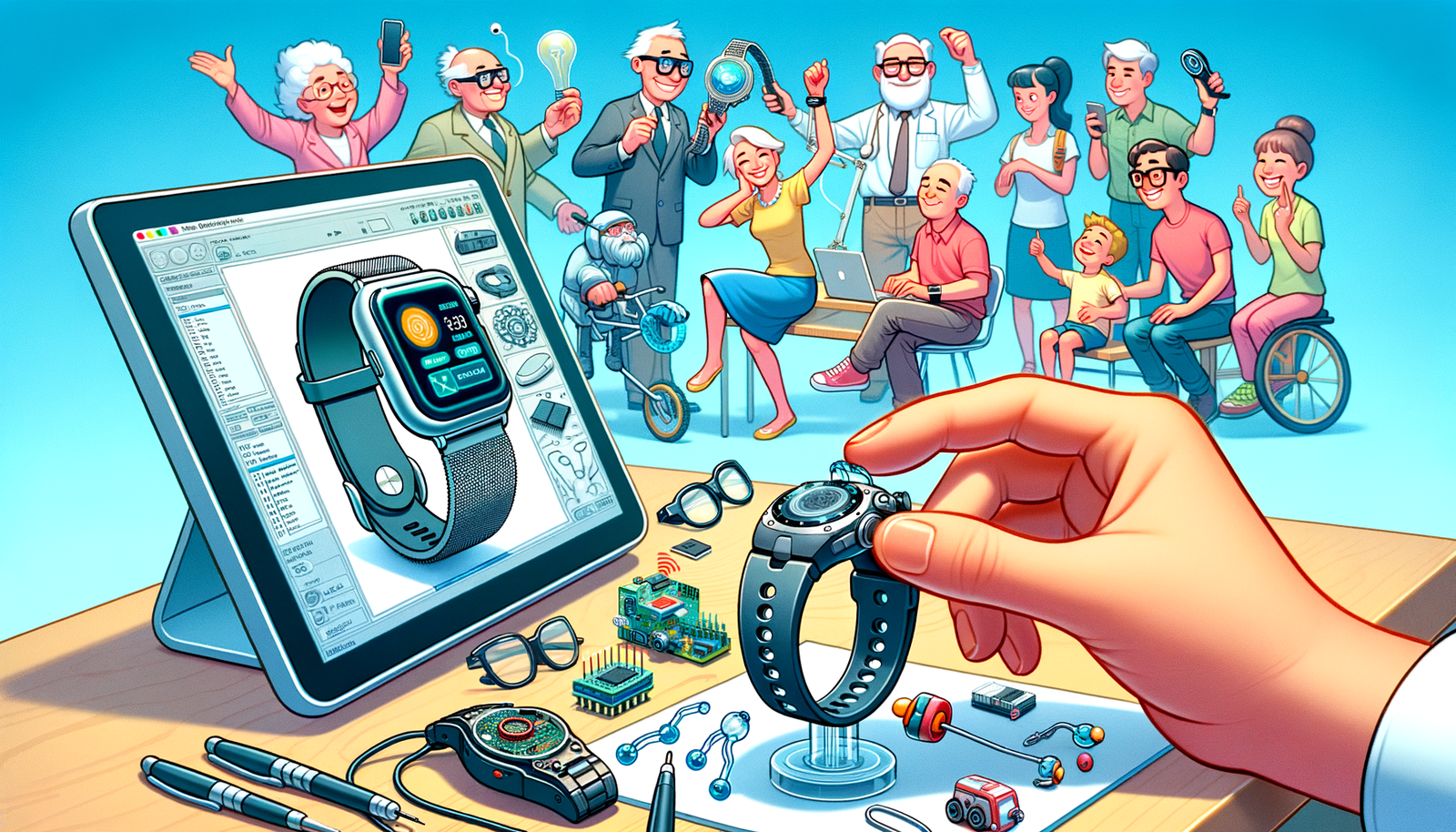Your Cart is Empty
Customer Testimonials
-
"Great customer service. The folks at Novedge were super helpful in navigating a somewhat complicated order including software upgrades and serial numbers in various stages of inactivity. They were friendly and helpful throughout the process.."
Ruben Ruckmark
"Quick & very helpful. We have been using Novedge for years and are very happy with their quick service when we need to make a purchase and excellent support resolving any issues."
Will Woodson
"Scott is the best. He reminds me about subscriptions dates, guides me in the correct direction for updates. He always responds promptly to me. He is literally the reason I continue to work with Novedge and will do so in the future."
Edward Mchugh
"Calvin Lok is “the man”. After my purchase of Sketchup 2021, he called me and provided step-by-step instructions to ease me through difficulties I was having with the setup of my new software."
Mike Borzage
Design Software History: Design Software's Crucial Role in Wearable Technology Evolution
November 04, 2024 6 min read


Introduction to Wearable Technology and Design Software
Wearable technology has revolutionized the way we interact with the world, embedding computing power seamlessly into our daily lives. From smartwatches that track our health metrics to augmented reality glasses that overlay digital information onto our physical environment, wearables have become an integral part of modern society. The significance of wearable technology lies in its ability to provide continuous, personalized data and services, enhancing both convenience and connectivity. As these devices become more sophisticated, the design software behind them plays a crucial role in shaping their functionality, aesthetics, and user experience.
The convergence of design software and wearable technology marks a pivotal point in technological advancement. Early wearables, such as the Calculator Watch introduced by Pulsar in the 1970s, faced significant design challenges due to limitations in technology and software capabilities. Designers grappled with miniaturization, ergonomics, and user interface constraints without the sophisticated tools available today. The evolution of design software has empowered creators to overcome these obstacles, enabling the development of more complex and user-friendly devices. This synergy between software and hardware innovation has accelerated the growth of the wearable tech industry, making it a burgeoning field ripe with possibilities.
Historically, the journey of wearable technology reflects a persistent quest to integrate technology into our personal space in a natural and unobtrusive manner. Early examples, such as Steve Mann's wearable computing experiments in the 1980s, showcased the potential of wearables but also highlighted significant design and technological hurdles. Mann, often referred to as the "father of wearable computing," pioneered devices that were bulky and intrusive by today's standards. These early endeavors underscored the need for advanced design software that could address the complexities of wearable devices, including form factor optimization, power management, and user interface design. The progression from these rudimentary devices to today's sleek wearables underscores the transformative impact of advancements in design software.
Key Advancements in Design Software for Wearables
The development of specialized design tools has been instrumental in the growth of wearable technology. Modern design software encompasses a range of categories, including Computer-Aided Design (CAD), 3D modeling, and embedded systems design, each contributing uniquely to the creation of innovative wearables. CAD software allows designers to create precise models of wearable devices, ensuring components fit together seamlessly within the limited space. 3D modeling enables the visualization of the device in a virtual environment, facilitating ergonomic assessments and aesthetic refinements. Embedded systems design software focuses on the integration of hardware and software components, crucial for the functionality of smart wearables.
Notable software platforms such as Autodesk Fusion 360, SolidWorks, and Tinkercad have significantly impacted wearable tech design. Autodesk Fusion 360 offers a comprehensive suite of tools for 3D modeling, simulation, and collaboration, making it a favorite among professionals designing complex wearables. SolidWorks provides robust features for mechanical design and simulation, allowing for detailed analysis of mechanical stresses and movement. Tinkercad, although more simplistic, has democratized design by making it accessible to hobbyists and educators, fostering a new generation of innovators in wearable technology.
These tools have evolved to meet the specific needs of wearable tech designers by incorporating features that address size constraints, user comfort, and integration of electronic components. For instance, Autodesk has introduced parametric modeling capabilities that facilitate quick adjustments to design parameters, essential for iterative design processes in wearables. The inclusion of simulation tools allows designers to test the durability and performance of their designs under various conditions, reducing the need for physical prototypes and accelerating development cycles. The evolution of these software platforms reflects an ongoing commitment to supporting the complex demands of wearable technology design.
Core Technologies Shaping Wearable Design Software
The design capabilities for wearables have been significantly enhanced by underlying technologies that facilitate innovation. One of the key advancements is the integration of sensors and microcontrollers within design software. Platforms like Arduino and Raspberry Pi have provided accessible means for incorporating sensors into wearable devices. Design software now often includes libraries and modules that support these components, allowing for the seamless integration of hardware and software. This integration is critical for developing wearables that can monitor physiological signals, environmental conditions, and user interactions.
Additive manufacturing, or 3D printing, plays a crucial role in the prototyping of wearable devices. The ability to quickly produce physical models from digital designs has transformed the iterative design process. Design software now often includes features that optimize models for 3D printing, addressing issues such as material constraints and structural integrity. This synergy between design software and additive manufacturing enables rapid prototyping, allowing designers to test form, fit, and function in a tangible way. It accelerates the development timeline and reduces costs associated with traditional prototyping methods.
User-centered design approaches are paramount in developing intuitive wearable applications. Design software has evolved to include tools that facilitate user experience (UX) and user interface (UI) design, ensuring wearables are not only functional but also easy to use. Key features of modern design software that support user-centered design include:
- Virtual Reality (VR) and Augmented Reality (AR) Simulation: These tools allow designers to immerse themselves in the user's environment, providing insights into how the wearable will be used in real-world scenarios.
- Ergonomic Analysis Tools: These features help assess the comfort and fit of wearables, crucial for devices that are worn for extended periods.
- Collaborative Design Platforms: Enable designers, engineers, and stakeholders to contribute to the design process, ensuring a holistic approach to product development.
Future of Design Software in the Wearable Technology Space
The future of design software in wearable technology is poised for exciting developments, driven by emerging trends and innovations. One of the most significant impacts will come from Artificial Intelligence (AI) and Machine Learning (ML). These technologies will enable personalized wearable designs by analyzing vast amounts of data to inform design decisions. For instance, AI algorithms can optimize designs for individual user ergonomics, creating custom-fit devices that enhance comfort and functionality. Machine learning can also predict user behaviors and preferences, allowing designers to create more intuitive and responsive wearables.
Collaborative platforms are becoming increasingly important in the co-designing of wearables. Cloud-based design software allows multiple designers, engineers, and stakeholders to work simultaneously on a project, regardless of their physical location. This collaborative approach fosters innovation through the exchange of ideas and expertise. Key advantages of collaborative platforms include:
- Real-Time Collaboration: Team members can make changes and provide feedback instantaneously, streamlining the design process.
- Version Control: Keeps track of design iterations, allowing teams to revert to previous versions if necessary.
- Resource Sharing: Facilitates the sharing of assets, libraries, and tools among team members, promoting consistency and efficiency.
As wearable technology becomes more mainstream, designers will face potential challenges. One significant challenge is managing the complexity of integrating advanced technologies into compact devices while maintaining user comfort and aesthetic appeal. Another challenge is ensuring interoperability and compatibility with other devices and systems, which requires meticulous design and testing. Additionally, privacy and security concerns will necessitate robust design solutions to protect user data.
Sustainability considerations are increasingly important in the design process, especially for disposable or recyclable wearables. Designers must consider the environmental impact of materials and manufacturing processes. This involves selecting sustainable materials, designing for disassembly, and incorporating lifecycle analysis into the design process. Design software is beginning to include tools that help assess the environmental impact of design choices, enabling designers to make more informed decisions that align with sustainability goals.
Conclusion
The significant contributions of design software in advancing wearable technology cannot be overstated. From overcoming early design challenges to enabling the creation of sophisticated, user-friendly devices, design software has been a driving force behind the evolution of wearables. The importance of continued innovation in design tools is paramount, as it must meet the evolving demands of this sector. As we look to the future, the intersection of technology, fashion, and design software promises to usher in a new era of wearable devices that are more integrated, personalized, and sustainable than ever before. The collaboration of designers, engineers, and technologists will shape the devices that enhance our lives in unprecedented ways, solidifying the role of design software as a cornerstone in the wearable technology landscape.
Also in Design News

Cinema 4D Tip: Creating Futuristic Visuals in Cinema 4D with Advanced Techniques and Tools
October 27, 2025 3 min read
Read More
Bluebeam Tip: Optimizing Precision with Bluebeam Revu's PDF Measure Tool
October 27, 2025 2 min read
Read More
AutoCAD Tip: Enhancing Efficiency and Precision with AutoCAD's ROTATE Command: Best Practices
October 27, 2025 2 min read
Read MoreSubscribe
Sign up to get the latest on sales, new releases and more …


